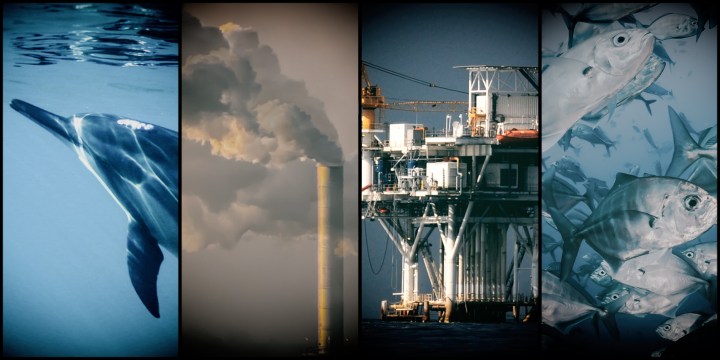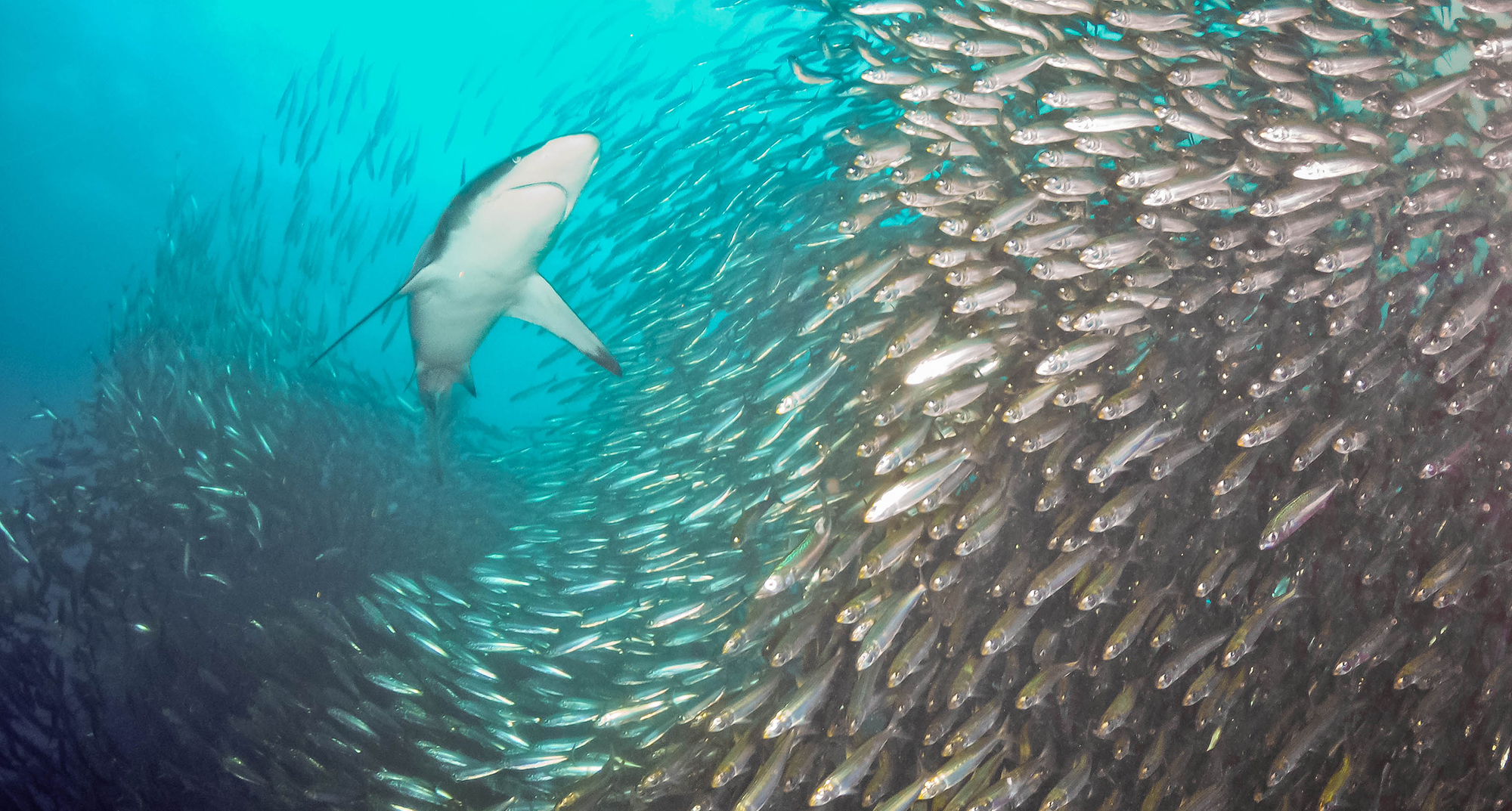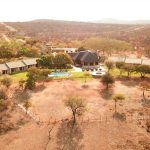OUR BURNING PLANET
KZN’s marine treasures: Sasol Offshore oil drilling sustains a major legal broadside

In August 2019, the South African oil giant Sasol and the Italian behemoth Eni were granted environmental authorisation to drill for hydrocarbons in the middle of seven ‘marine protected areas’. The ensuing uproar delivered no fewer than 47 appeals, which were all knocked back by the national government. But in mid-June 2021, papers were filed in the North Gauteng High Court that represent the strongest challenge yet. The question remains: will the madness stop?
To hear it from divers that are familiar with the seasons and rhythms of the Protea Banks, there are waters off the KZN coast that are like nowhere else on earth. They will tell you of huge schools of hammerheads that glide overhead in summer; hundreds of ragged-tooths that flash past in winter; elusive tiger sharks that can be spotted from January to June; perennial bull sharks and oceanic blacktips; aggregations of giant guitar sharks that are endemic to this 1,200 square kilometres of sea.
You may also hear stories of eagle rays, round ribbontail rays and sometimes even mantas. From the game fishermen, you may be regaled with tales of the ones that got away; from kingfish, sailfish and marlin to barracuda, dorado and wahoo.
The marine biologists will speak in great detail about the reefs and submarine canyons, where there are species of corals and comb jellies that are still unknown to science. And the locals, if you ask them, might tell you about the humpback whales, which breach and fluke and spy-hop on their way to the south pole.
Still, the best stories are reserved for the months of May and June, when tens of millions of sardines run north up the east coast, after spawning on the Agulhas Bank where the two oceans meet.

(Photo: Flickr / wildestanimal)
In the Government Gazette of 23 May 2019, in recognition of this ecological wonder, the former minister of environmental affairs, Nomvula Mokonyane, declared the Protea Banks a marine protected area (MPA). The declaration dealt with scientific search permits, general restrictions on the use of vessels, prohibitions in the no-go zone, scuba diving regulations and the total ban on fishing for the area’s sharks and rays. The full regulations would take effect, stated the minister, on 1 August 2019.
Less than four weeks later, on 26 August 2019, the Department of Mineral Resources and Energy gave the go-ahead to Sasol and Eni to drill for hydrocarbons — the principal components of petroleum and natural gas — off this very same stretch of coast.
Despite 47 appeals against the environmental authorisation, the South African government has until now favoured the oil giants. But on 15 June 2021, in a founding affidavit that ran to more than 600 paragraphs, the South Durban Community Environmental Alliance (SDCEA) delivered to the North Gauteng High Court the strongest challenge yet.
The Protea Banks featured heavily in the papers, as did another six MPAs — according to the commissioned experts, they would all be at “risk of significant impact” if the oil giants prevailed.
“Four of these MPAs,” noted marine scientist Jean Harris in her report, “are close enough to the proposed drilling sites… to make them vulnerable to persistent degradation and damage from day-to-day operational pollution, oil leakages and smaller spills that are documented to occur, in addition to them being at significant risk should a major oil spill incident happen.”
Aside from Protea Banks, Harris was referring in the above assessment to uThukela, Aliwal Shoal and Pondoland, which — like the remaining MPAs — had been designated according to the provisions of the National Environmental Management: Protected Areas Act (NEM:PA).
Harris also noted that the designation of all seven vulnerable MPAs had been supported by the National Environmental Management: Integrated Coastal Management Act (NEM:ICMA), which “intends to ensure that coastal and marine environments are afforded a high degree of protection in the interests of the whole community and for the benefit of future generations”.
As an expert witness, it was doubtful that the SDCEA’s attorneys could have done much better than Harris. Not only could she boast 25 years in the field, but for 11 of those years, she had led the scientific services team of Ezemvelo KZN Wildlife, the chief governmental oversight authority for the MPAs on the province’s coast.
Ezemvelo KZN Wildlife, it turned out, had been named as the ninth respondent in the case.
***
“The applicant now institutes this application seeking to have both the initial decision and the appeal decision reviewed and set aside,” we read on page 3 of the founding affidavit, with respect to the environmental authorisation.
On page 32, after a summary of the relevant legislation, we arrive at the first ground for review.
As alleged, the South African Agency for the Promotion of Petroleum Exploration and Exploitation, commonly known as PASA, had been acting way beyond its scope. PASA, the papers state, had not only “performed the role of the competent authority” in accepting the application for an environmental authorisation, it had actually accepted and approved the all-important final scoping report.
Quoting from the correspondence, the affidavit refers to a letter that PASA had written to Environmental Resources Management (ERM), the environmental assessment practitioner that had been hired by Sasol and Eni to prepare the relevant reports:
“[PASA] has evaluated the submitted [final scoping report]… and is satisfied that the documents comply with the minimum requirements… The FSR is hereby accepted in terms of Regulation 22(a) of the EIA Regulations, 2014. You may therefore proceed with the environmental impact assessment…”
Needless to say, if the judge were to agree with the interpretation of the SDCEA’s attorneys, this would be the ultimate case of the fox running the henhouse.
The applicant further alleges in the papers that ERM missed its deadline for submission of the draft EIA, failed to formally apply for an extension (as required by the regulations) and yet received an automatic extension from PASA anyway.
The second ground for review concerns “procedural unfairness in the EIA process”, where the applicant maintains that PASA was somehow unsatisfied with the original oil spill modelling report and so commissioned an independent audit, which it then failed to share with the “interested and affected parties”. As a “controversial aspect” of the final environmental authorisation, the SDCEA alleges, anything to do with the modelling of oil spills should have been fully disclosed.
Then, in the third ground for review, we get to the “material errors of law”, which primarily concern three environmental management acts that were either “inadequately considered” or not taken into account at all. Here, the SDCEA takes direct aim at the minister and deputy-director general of the DMRE — the acknowledged competent authorities — by contending that “an oil spill on land is very different to an oil spill in coastal waters with currents, wave and tidal movements”.
The acts in question, aside from NEM:PA and NEM:ICMA, include the National Environmental Management: Biodiversity Act (NEM:BA). Each of these key pieces of legislation, as the applicant points out, fall within the framework of the National Environmental Management Act, which in turn articulates section 24 of the South African Constitution.
Since the initial authorisation and the rejection of the subsequent appeal were both primarily based on the distances between the drilling coordinates and the protected areas — distances that run anywhere from 20 kilometres to 50 kilometres — the SDCEA alleges that the minister and DDG “had no more than passing regard to the overriding legislative importance” of these acts. But, as the SDCEA makes clear with respect to the reports of its own experts, “coastal processes and habitats are inherently dynamic and inter-related and the legislative focus is on protecting such ecosystems as a whole”.
Here, the influence of the Agulhas current is paramount. Throughout the affidavit, expert opinion is provided on the high speeds of the current, its “inshore tidal movements” and the fact that “sharks, rays, seabirds and turtles” use it as a transport highway.
“In summary,” the affidavit states, quoting directly from Harris’ report, “the drilling of these six oil wells is not in the interests either of the people living along the coast in question (both rural and urban communities), those who rely on the ocean for their livelihoods or of the ‘other living organisms’ that live in the ocean where the drilling is to occur, nor those that live in the coastal inshore areas in the path of the Agulhas current downstream of the drilling sites.
“For both the coastal people and the other living organisms, the prospect of this activity brings only risk and no benefit.”
***
None of this, however, was accounting for the global context, where climate and ecosystem collapse were beginning to wreak the sort of havoc that placed offshore oil drilling in an entirely new realm of “alleged” human stupidity.
In his assessment of the marine ecologists report (MER) and oil spill report (OSR) that Sasol and Eni were required to submit as part of the authorisation process, Simon Elwen — a marine biologist with over 20 years’ experience and 50 peer reviewed papers to his name — noted that the documents had focused “almost exclusively on the impacts of the short-term and localised exploration drilling phase”. As a result, added Elwen, the ministerial and appeal decisions were presumably made on that basis too.
As the founding director and principal scientist at Sea Search, a research company that offers specialist advice on marine conservation and environmental impact assessments, Elwen was perfectly placed to point out the obvious — the exploration phase, if hydrocarbons were indeed found, would be no more than a precursor to the “exploitation” phase.
“The impacts of long-term hydrocarbon extraction will be substantially broader in spatial scale,” he noted, adding that the duration of the project would then run into decades.
“Additionally, hydrocarbon extraction here will lay the foundation for further expansion of fossil fuel infrastructure in both marine (e.g. rigs, tankers) and terrestrial ecosystems (e.g. refineries).
“A strategic assessment and broad and long-term perspective of the environmental impacts of hydrocarbon extraction within the framework of global sustainability goals and climate change impacts should have been considered during decision-making but was not included in the Final EIA Report.”
Further, Elwen observed, neither the MER nor the OSR took into account the “likely concentration” of shipping routes that the exploitation phase would entail, which in turn would have “implications for all forms of pollution from noise to spills, especially in relation to existing protected areas”.
And if that wasn’t enough, there appeared to be something even more potentially destructive that the OSR had overlooked, mainly because it had based the probability of an oil spill on what Elwen and other experts had termed “highly averaged data” on weather conditions.
“In this industry,” Elwen observed, “most accidents happen during extreme weather events, which often have very atypical wind or swell characteristics (e.g. different directions and much greater power). Given the predicted increases in both the power and frequency of extreme weather events, and likelihood of an accident taking place under unusual weather conditions, the OSR has likely significantly underestimated the scale of an oil spill event.”
All of the above is included in the SDCEA’s founding affidavit, of course, under the fourth ground for review — “inadequate consideration of need and desirability”.
While Elwen’s report falls under the sub-header of “failure to consider negative impacts”, the overview of the section makes for equally incriminating reading. The final EIA, notes the applicant, does not take into account climate change considerations, nor does it consider alternatives, “including the no development option”.
In the first instance, as per the expert report of climate scientists Mark New and Shayan Barmand, the “emissions of CO2 from burning proven oil reserves” will “substantially exceed” South Africa’s carbon budget, as defined by the Paris Agreement. In the second instance, the possibility of not going ahead with the project isn’t even up for debate.
The fifth ground for review digs deeper into the tenets of NEM:ICMA, where the DMRE’s “failure to consider the whole community of life, including humans”, is the core accusation. As an aside, the section also notes that the final EIA does not list the track records of either Sasol or Eni in complying with previous environmental authorisations, pointing out the oil spills and attendant allegations of corruption that had been levelled against the latter “in several countries including Nigeria, Iraq, Kazakhstan, Algeria and Congo”.
The sixth ground for review, “failure to give adequate consideration to international law”, is where most of this comes together. The list of global laws, treaties and conventions that the environmental authorisation allegedly breaches is long and distinguished, particularly in light of the fact that South Africa is a signatory to all of them.
From the Convention on Migratory Species, which South Africa became a party to in 1991, to the Convention on Biological Diversity, which the country ratified in 1993, the affidavit is in this section a tribute to humanity’s best intentions.
But neither of these conventions, nor the World Heritage Convention (signed 1997), Ramsar Convention (signed 1975) and International Whaling Convention (signed 1948), appear to have been given much thought by the competent authority, which says something about our collective road to hell.
And while the seventh and final ground for review takes in “other relevant considerations”, it appears no less damning. Here, included among a list of seven allegations, are the “inadequacy of oil spill modelling”, the “absence of an oil spill contingency plan” and the “failure to assess intangible ocean heritage”.
Perhaps unsurprisingly, given the length and seriousness of these allegations, the SDCEA’s attorneys have informed Daily Maverick that they expect the respondents’ answering affidavits by no earlier than mid-September. Perhaps equally unsurprisingly, the respondents Daily Maverick approached for comment chose not to reply.
Either way, PASA, two national departments, two provincial agencies and two giant oil companies have a massive fight on their hands. In terms of relief, all the applicant asks is for the madness to stop. DM/OBP





















 Become an Insider
Become an Insider
The oil companies know how to avoid spills. We have to make sure that they follow best practices and take responsibility for spills by monitoring them closely.
Oil companies know how to avoid spills? You believe this? Simple google search finds a numnber of substantial oil spills linked to oil companies rigs and transport of oil.
It costs money to avoid spills. It’s cheaper to just pay the fines. If you look at reports of the investigations into the spills, the measures that should have been taken are spelled out.
Mr Pope. Seriously? If the spill is big enough, the company/syndicate just keeps the marbles it has & bankrupts itself. In any event, NO amount of mitigation can repair the harm. The Gulf Coast of Florida is still not close to what it was…10 years on & more than $50 billion – yes, with a B – spent. And that is in the US, which has a truly powerful legal system & enforcement mechanism. South Africa has no heft. No, sir, you are either a troll, an oil ‘insider’, or simply ingenuous.
Thank heaven that sanity prevails, that civil society, NGO’s and other environmental organisations will not give up on protecting the planet, the living organisms that inhabit it and the future of generations to come!
Because government and the fossil fuel industry will certainly not….
Fully agree!
Why drill at all? We are moving into a new energy era. The only reason this was entertained at all is because someone could make money under the table ie got a big payoff.